Culture
“Black Panther,” “Black KkKlansman,” Regina King, Spike Lee and More Nominated for 2019 Academy Awards
Published
6 years agoon
By
BLAQER Media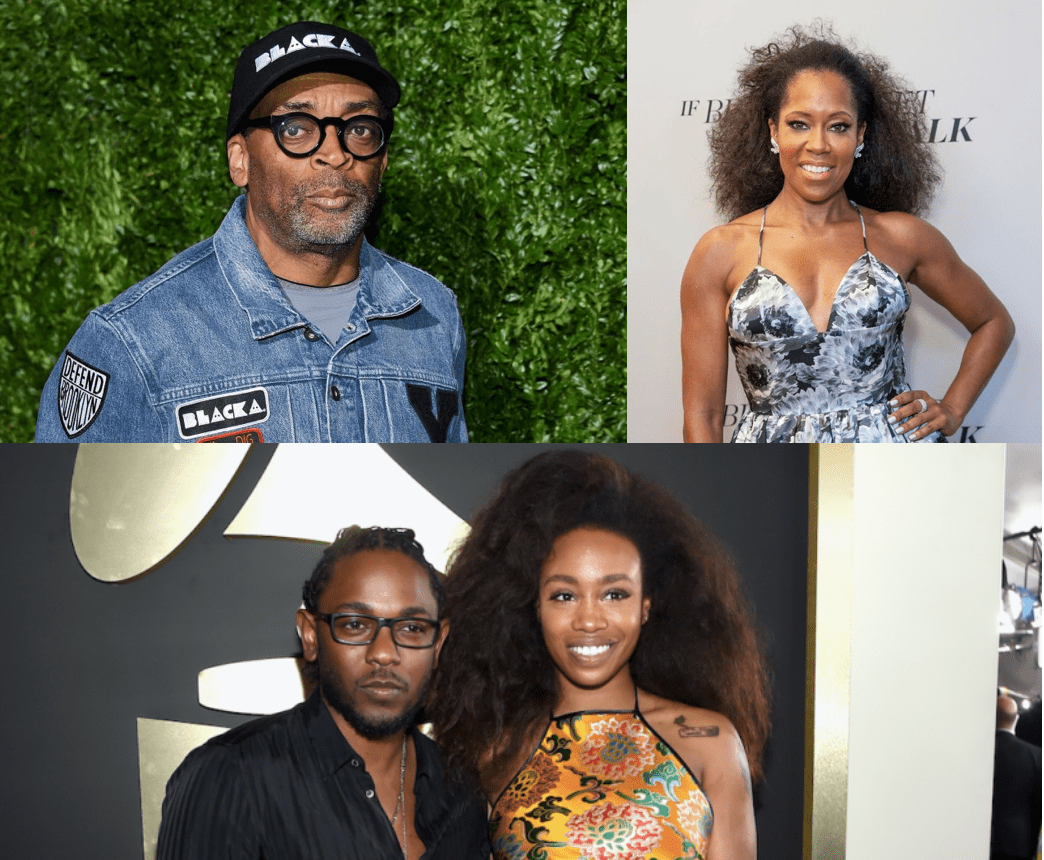
The nominees for the 91st Academy Awards were announced early this morning by Black-ish star Tracee Ellis Ross and The Big Sick star Kumail Nanjiani, and among them were for the first time a superhero movie nominated for Best Picture, Black Panther, and the prolific Spike Lee‘s first nomination in the Best Director category for Black KkKlansman, which also was nominated for Best Picture.
Ever since the #OscarsSoWhite controversy of 2016, the demand for more diversity in movies and television has gained and retained attention. Although there are no African-Americans among the Best Actor or Best Actress nominees, Mexican actress Yalitza Aparicio was recognized for her work in Roma, and among the nominees in the Best Supporting Actress category are Golden Globe winner Regina King for her turn in If Beale Street Could Talk, and Academy Award winner Mahershala Ali, who garnered his third Oscar nomination for Best Supporting Actor in Green Book.
Other notable African-American Oscar nominees this year are Kendrick Lamar and SZA in the Original Song category for “All The Stars” from Black Panther, and Academy Award winner Jennifer Hudson, who might win for what she first became known for as she is also nominated (with Diane Warren) in the Original Song category for “I’ll Fight” from RBG.

Peter Ramsey, who is co-director on Best Animated Feature Spider-Man: Into the Spider-Verse, and Barry Jenkins in the Adapted Screenplay category for If Beale Street Could Talk. Spike Lee earned a second nod in the Adapted Screenplay category as one of the writers of Black KkKlansman.
Another first this year is Hannah Beachler‘s nomination for Production Design for Black Panther, the only African American woman to receive one in this category. Ruth E. Carter earned her third nomination for Costume Design (the first two were forMalcolm X and Amistad) for Black Panther and composer Terence Blanchard, who has scored more than forty films and all of Spike Lee’s, finally earned an Original Score nomination this year for his work on Black KkKlansman.
The Oscars will be broadcast live by ABC on Feb. 24 at 5 p.m. PT/8 p.m. ET. Below is a complete list of all the nominees:
Best Picture:
“Black Panther”
“BlacKkKlansman”
“Bohemian Rhapsody”
“The Favourite”
“Green Book”
“Roma”
“A Star Is Born”
“Vice”
Lead Actor:
Christian Bale, “Vice”
Bradley Cooper, “A Star Is Born”
Willem Dafoe, “At Eternity’s Gate”
Rami Malek, “Bohemian Rhapsody”
Viggo Mortensen, “Green Book”
Lead Actress:
Yalitza Aparicio, “Roma”
Glenn Close, “The Wife”
Olivia Colman, “The Favourite”
Lady Gaga, “A Star Is Born”
Melissa McCarthy, “Can You Ever Forgive Me?”
Supporting Actor:
Mahershala Ali, “Green Book”
Adam Driver, “BlacKkKlansman”
Sam Elliott, “A Star Is Born”
Richard E. Grant, “Can You Ever Forgive Me?”
Sam Rockwell, “Vice”
Supporting Actress:
Amy Adams, “Vice”
Marina de Tavira, “Roma”
Regina King, “If Beale Street Could Talk”
Emma Stone, “The Favourite”
Rachel Weisz, “The Favourite”
Director:
Spike Lee, “BlacKkKlansman”
Pawel Pawlikowski, “Cold War”
Yorgos Lanthimos, “The Favourite”
Alfonso Cuarón, “Roma”
Adam McKay, “Vice”
Animated Feature:
“Incredibles 2,” Brad Bird
“Isle of Dogs,” Wes Anderson
“Mirai,” Mamoru Hosoda
“Ralph Breaks the Internet,” Rich Moore, Phil Johnston
“Spider-Man: Into the Spider-Verse,” Bob Persichetti, Peter Ramsey, Rodney Rothman
Animated Short:
“Animal Behaviour,” Alison Snowden, David Fine
“Bao,” Domee Shi
“Late Afternoon,” Louise Bagnall
“One Small Step,” Andrew Chesworth, Bobby Pontillas
“Weekends,” Trevor Jimenez
Adapted Screenplay:
“The Ballad of Buster Scruggs,” Joel Coen , Ethan Coen
“BlacKkKlansman,” Charlie Wachtel, David Rabinowitz, Kevin Willmott, Spike Lee
“Can You Ever Forgive Me?,” Nicole Holofcener and Jeff Whitty
“If Beale Street Could Talk,” Barry Jenkins
“A Star Is Born,” Eric Roth, Bradley Cooper, Will Fetters
Original Screenplay:
“The Favourite,” Deborah Davis, Tony McNamara
“First Reformed,” Paul Schrader
“Green Book,” Nick Vallelonga, Brian Currie, Peter Farrelly
“Roma,” Alfonso Cuarón
“Vice,” Adam McKay
Cinematography:
“Cold War,” Lukasz Zal
“The Favourite,” Robbie Ryan
“Never Look Away,” Caleb Deschanel
“Roma,” Alfonso Cuarón
“A Star Is Born,” Matthew Libatique
Best Documentary Feature:
“Free Solo,” Jimmy Chin, Elizabeth Chai Vasarhelyi
“Hale County This Morning, This Evening,” RaMell Ross
“Minding the Gap,” Bing Liu
“Of Fathers and Sons,” Talal Derki
“RBG,” Betsy West, Julie Cohen
Best Documentary Short Subject:
“Black Sheep,” Ed Perkins
“End Game,” Rob Epstein, Jeffrey Friedman
“Lifeboat,” Skye Fitzgerald
“A Night at the Garden,” Marshall Curry
“Period. End of Sentence.,” Rayka Zehtabchi
Best Live Action Short Film:
“Detainment,” Vincent Lambe
“Fauve,” Jeremy Comte
“Marguerite,” Marianne Farley
“Mother,” Rodrigo Sorogoyen
“Skin,” Guy Nattiv
Best Foreign Language Film:
“Capernaum” (Lebanon)
“Cold War” (Poland)
“Never Look Away” (Germany)
“Roma” (Mexico)
“Shoplifters” (Japan)
Film Editing:
“BlacKkKlansman,” Barry Alexander Brown
“Bohemian Rhapsody,” John Ottman
“Green Book,” Patrick J. Don Vito
“The Favourite,” Yorgos Mavropsaridis
“Vice,” Hank Corwin
Sound Editing:
“Black Panther,” Benjamin A. Burtt, Steve Boeddeker
“Bohemian Rhapsody,” John Warhurst
“First Man,” Ai-Ling Lee, Mildred Iatrou Morgan
“A Quiet Place,” Ethan Van der Ryn, Erik Aadahl
“Roma,” Sergio Diaz, Skip Lievsay
Sound Mixing:
“Black Panther”
“Bohemian Rhapsody”
“First Man”
“Roma”
“A Star Is Born”
Production Design:
“Black Panther,” Hannah Beachler
“First Man,” Nathan Crowley, Kathy Lucas
“The Favourite,” Fiona Crombie, Alice Felton
“Mary Poppins Returns,” John Myhre, Gordon Sim
“Roma,” Eugenio Caballero, Bárbara Enrı́quez
Original Score:
“BlacKkKlansman,” Terence Blanchard
“Black Panther,” Ludwig Goransson
“If Beale Street Could Talk,” Nicholas Britell
“Isle of Dogs,” Alexandre Desplat
“Mary Poppins Returns,” Marc Shaiman, Scott Wittman
Original Song:
“All The Stars” from “Black Panther” by Kendrick Lamar, SZA
“I’ll Fight” from “RBG” by Diane Warren, Jennifer Hudson
“The Place Where Lost Things Go” from “Mary Poppins Returns” by Marc Shaiman, Scott Wittman
“Shallow” from “A Star Is Born” by Lady Gaga, Mark Ronson, Anthony Rossomando, Andrew Wyatt and Benjamin Rice
“When A Cowboy Trades His Spurs For Wings” from “The Ballad of Buster Scruggs” by David Rawlings and Gillian Welch
Makeup and Hair:
“Border”
“Mary Queen of Scots”
“Vice”
Costume Design:
“The Ballad of Buster Scruggs,” Mary Zophres
“Black Panther,” Ruth E. Carter
“The Favourite,” Sandy Powell
“Mary Poppins Returns,” Sandy Powell
“Mary Queen of Scots,” Alexandra Byrne
Visual Effects:
“Avengers: Infinity War”
“Christopher Robin”
“First Man”
“Ready Player One”
“Solo: A Star Wars Story”
You may like
-


Julius P. Williams Elected First African American President of the Conductors Guild
-
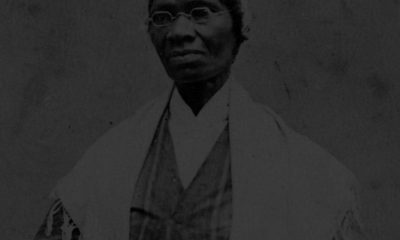

The Life and Legacy of Abolitionist and Activist Sojourner Truth
-
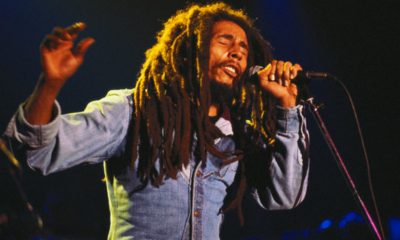

15 Top Civil Rights Songs That Promote Freedom and Justice
-


Caribbean Women Reported as First All-Black Women’s Rowing Team to Cross Atlantic Ocean in Grueling Sport Competition
-


Free Admission to National Center for Civil and Human Rights all February Thanks to Coca-Cola
-
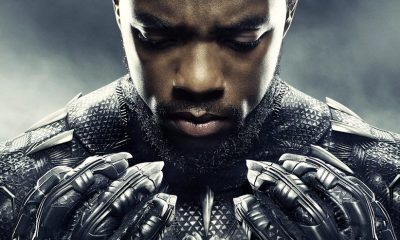

Disney Celebrates Black History Month: Gives $1.5 Million to United Negro College Fund and Free ‘Black Panther’ Tickets
Career
First Black Man Elected President of the American Nurses Association (ANA)
Published
4 years agoon
April 9, 2020
Ernest Grant, PhD, RN, FAAN, President of the American Nurses Association

A distinguished leader, Dr. Grant has more than 30 years of nursing experience and is an internationally recognized burn-care and fire-safety expert. He previously served as the burn outreach coordinator for the North Carolina Jaycee Burn Center at University of North Carolina (UNC) Hospitals in Chapel Hill. In this role, Grant oversaw burn education for physicians, nurses, and other allied health care personnel and ran the center’s nationally acclaimed burn prevention program, which promotes safety and works to reduce burn-related injuries through public education and the legislative process. Grant also serves as adjunct faculty for the UNC-Chapel Hill School of Nursing, where he works with undergraduate and graduate nursing students in the classroom and clinical settings.
Grant is frequently sought out for his expertise as a clinician and educator. In addition to being a prolific speaker, he has conducted numerous burn-education courses with various branches of the U.S. military in preparation for troops’ deployment to Iraq and Afghanistan. In 2002, President George W. Bush presented Grant with a Nurse of the Year Award
for his work treating burn victims from the World Trade Center site. In 2013, Grant received the B.T. Fowler Lifetime Achievement Award from the North Carolina Fire and Life Safety Education Council for making a difference in preventing the devastating effects of fire and burn injuries and deaths within the state.
An active participant in professional organizations, Grant is a past chair of the National Fire Protection Association board of directors and served as second vice president of the American Burn Association board of trustees. He also holds membership in Sigma Theta Tau and Chi Eta Phi. Grant served as president of the North Carolina Nurses Association from 2009-11. In 2002, ANA honored Grant with the Honorary Nursing Practice Award for his contributions to the advancement of nursing practice through strength of character, commitment, and competence.
Grant holds a BSN degree from North Carolina Central University and MSN and PhD degrees from the University of North Carolina at Greensboro. He was inducted as a fellow into the American Academy of Nursing in 2014. He is the first man to be elected to the office of president of the American Nurses Association.
History
Black History Month: The Son of a Slave Who Ran for President, George Edwin Taylor
Published
5 years agoon
February 10, 2019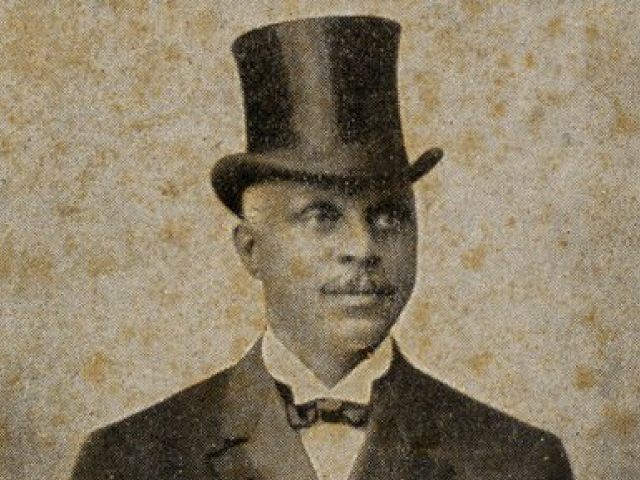
Almost a century before Barack Obama made history as the first African American to become president of the United States in 2008, a black man by the name of George Edwin Taylor set his eyes on the White House in 1904.
Born in 1857 as the son of a free woman and an African American slave, Taylor worked as a professional journalist before getting involved in politics. However, he discovered that neither the Democratic nor the Republican Party represented the interests of people of color.
In 1904, an all-black independent party called The National Liberty Party nominated Taylor to run for president on a third-party ticket. Taylor’s candidacy was largely ridiculed as a joke and his name was left off the ballot in most states. Nevertheless, Theodore Roosevelt was re-elected as president. Still, Taylor’s run symbolized the growth of political power that black Americans acquired following the Reconstruction Era.
According to Jacksonville.com, a few days after the election, Taylor explained in a newspaper interview why he decided to launch a presidential campaign.
“Yes, I know most white folks take me as a joke … but I want to tell you the colored man is beginning to see a lot of things that the white folks do not give him credit for seeing. He’s beginning to see that he has got to take care of his own interests, and what’s more, that he has the power to do it,” he told the paper.
Eight years later, Taylor moved to Jacksonville, Florida, in late 1912 and worked as the manager of the Promotion Publishing Co., which printed a newspaper aimed at the city’s black residents. Records also show that he worked as the editor of the “colored section” of the Florida Times-Union and later for the Florida Sentinel, a progressive newspaper. He died in 1925. Forty-seven years later, congresswoman Shirley Chisholm launched a presidential campaign under the Democratic ticket, becoming the first African American candidate for a major party.
Culture
The Life and Legacy of Abolitionist and Activist Sojourner Truth
Published
5 years agoon
February 6, 2019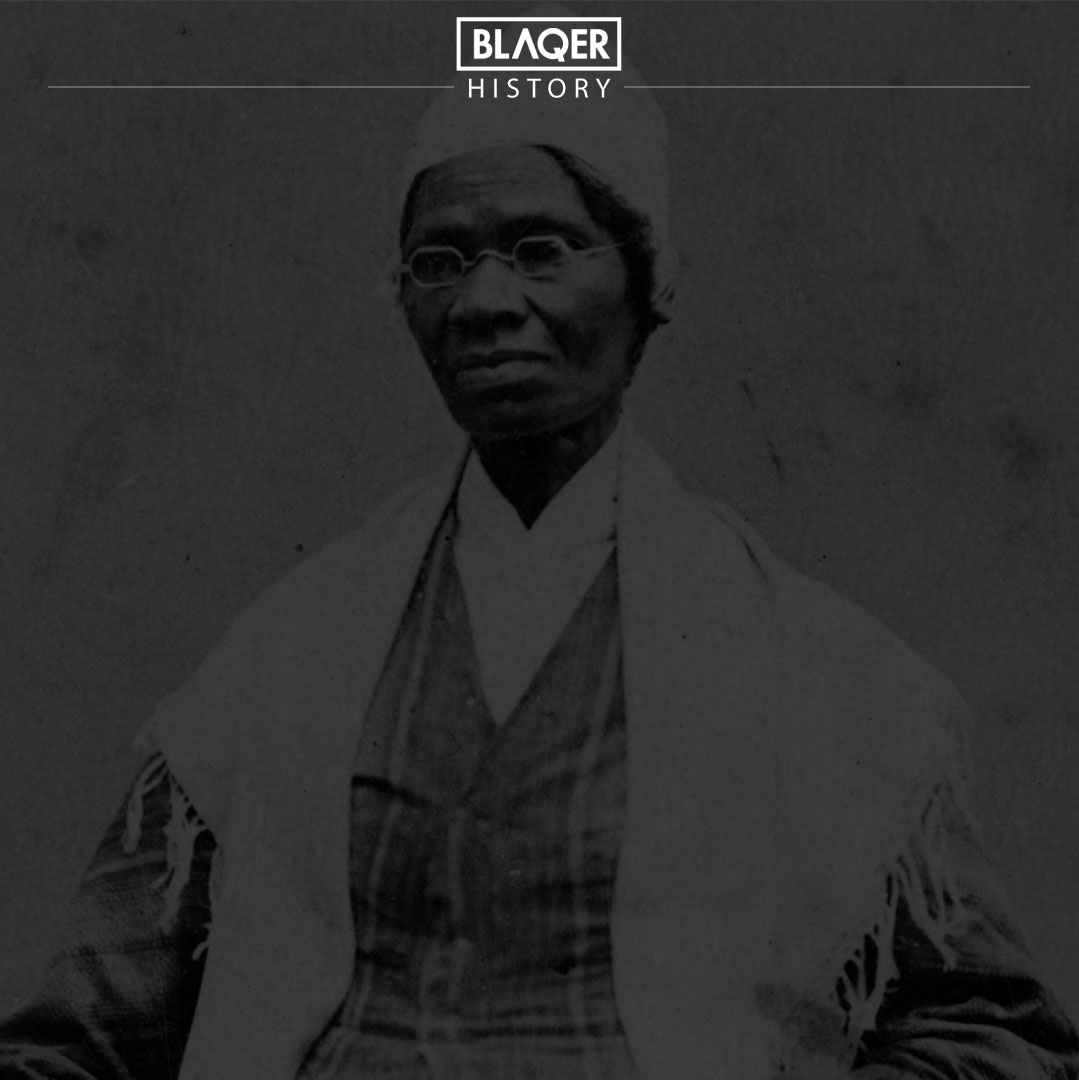
Sojourner Truth was an African American evangelist, abolitionist, women’s rights activist and author who lived a miserable life as a slave, serving several masters throughout New York before escaping to freedom in 1826. After gaining her freedom, Truth became a Christian and, at what she believed was God’s urging, preached about abolitionism and equal rights for all, highlighted in her stirring “Ain’t I a Woman?” speech, delivered at a women’s convention in Ohio in 1851. She continued her crusade for the rest of her life, earning an audience with President Abraham Lincoln and becoming one of the world’s best-known human rights crusaders.
Sojourner Truth’s Early Life
Sojourner Truth was born Isabella Baumfree in 1797 to slave parents in Ulster County, New York. Around age nine, she was sold at a slave auction to John Neely for $100, along with a flock of sheep.
Neely was a cruel and violent slave master who beat the young girl regularly. She was sold two more times by age 13 and ultimately ended up at the West Park, New York, home of John Dumont and his second wife Elizabeth.
Around age 18, Isabella fell in love with a slave named Robert from a nearby farm. But the couple was not allowed to marry since they had separate owners. Instead, Isabella was forced to marry another slave owned by Dumont named Thomas – she eventually bore five children.
Walking from Slavery to Freedom
At the turn of the 19th century, New York started legislating emancipation, but it would take over two decades for liberation to come for all slaves in the state.
In the meantime, Dumont promised Isabella he’d grant her freedom on July 4, 1826, “if she would do well and be faithful.” When the date arrived, however, he had a change of heart and refused to let her go.
Incensed, Isabella completed what she felt was her obligation to Dumont and then escaped his clutches as fast as her six-foot-tall frame could walk away, infant daughter in tow. She later said, “I did not run off, for I thought that wicked, but I walked off, believing that to be all right.”
In what must have been a gut-wrenching choice, she left her other children behind because they were still legally bound to Dumont.
Isabella made her way to New Paltz, New York, where she and her daughter were taken in by Isaac and Maria Van Wagenen. When Dumont came to re-claim his “property,” the Van Wagenen’s offered to buy Isabella’s services from him for $20 until the New York Anti-Slavery Law emancipating all slaves took effect in 1827; Dumont agreed.
Winning her Court Case
After the New York Anti-Slavery Law was passed, Dumont illegally sold Isabella’s five-year-old son Peter. With the help of the Van Wagenen’s, she filed a lawsuit to get him back.
Months later, Isabella won her case and regained custody of her son. She was the first black woman to sue a white man in a United States court and prevail.
Spiritual Calling
The Van Wagenen’s had a profound impact on Isabella’s spirituality and she became a fervent Christian. In 1829, she moved to New York City with Peter to work as a housekeeper for evangelist preacher Elijah Pierson.
She left Pierson three years later to work for another preacher, Robert Matthews. When Elijah Pierson died, Isabella and Matthews were accused of poisoning him and of theft but were eventually acquitted.
Living among people of faith only emboldened Isabella’s devoutness to Christianity and her desire to preach and win converts. In 1843, with what she believed was her religious obligation to go forth and speak the truth, she changed her name to Sojourner Truth and embarked on a journey to preach the gospel and speak out against slavery and oppression.
Ain’t I a Woman?
In 1844, Truth joined a Massachusetts abolitionist organization called the Northampton Association of Education and Industry, where she met leading abolitionists such as Frederick Douglass, and effectively launched her career as an equal rights activist.
In 1851, at the Ohio Women’s Rights Convention, Truth spoke out about equal rights for black women. Reporters published different transcripts of the speech where she used the rhetorical question, “Ain’t I A Woman?” to point out the discrimination she experienced as a black woman.
The speech became her most famous, though it was just one of many as she continued to advocate for human rights the rest of her life.
Civil War Years
Like another famous escaped slave, Harriet Tubman, Truth helped recruit black soldiers during the Civil War. She worked in Washington, D.C., for the National Freedman’s Relief Association and rallied people to donate food, clothes and other supplies to black refugees.
Her activism for the abolitionist movement gained the attention of President Abraham Lincoln, who invited her to the White House in October 1864 and showed her a Bible given to him by African Americans in Baltimore.
While Truth was in Washington, she put her courage and disdain for segregation on display by riding on whites-only streetcars. When the Civil War ended, she tried exhaustively to find jobs for freed blacks weighed down with poverty.
Later, she unsuccessfully petitioned the government to resettle freed blacks on government land in the West.
Sojourner Truth’s Later Years
In 1867, Truth moved to Battle Creek, Michigan, where some of her daughters lived. She continued to speak out against discrimination and in favor of woman’s suffrage. She was especially concerned that some civil rights leaders such as Frederick Douglass felt equal rights for black men took precedence over those of black women.
Truth died at home on November 26, 1883. Records show she was age 86 yet her memorial tombstone states she was 105. Engraved on her tombstone are the words, “Is God Dead?,” a question she once asked a despondent Frederick Douglass to remind him to have faith.
Truth left behind a legacy of courage, faith and fighting for what’s right and honorable, but she also left a legacy of words and songs including her autobiography, The Narrative of Sojourner Truth, which she dictated in 1850 to Olive Gilbert since she never learned to read or write.
Culture
15 Top Civil Rights Songs That Promote Freedom and Justice
Published
5 years agoon
February 5, 2019
During Black History Month it is important to reflect and think about how much change is still needed since the Civil Rights movement in the 1960s. To get inspired to continue to make a difference, take a look at these top civil rights songs you should have on your playlist rotation.
15 Top Civil Rights Songs
1.Glory – Common ft. John Legend
‘Glory’ is a collaborative track by John Legend along with rapper Common from the soundtrack of the 2014 film Selma.The song contains powerful and meaningful lyrics, such as, “Freedom is like religion to us, justice is juxtaposition in us.”
2. Freedom – Various Artists
This 90s classic, featuring top music stars across several genres, including TLC, SWV, En Vogue, Queen Latifah, Patra, Michelle Ndegeocello, Aaliyah, and Vanessa Williams, was a major girl-power moment during the time. It is included on the soundtrack for “Panther” a 1995 Mario Van Peebles film about the controversial political group.
3. Harder Than You Think – Public Enemy
‘Harder Than You Think’ is the first single off of Public Enemy’s 20th anniversary album, which was released in 2007. The song was also selected by NBC to debut on their Super Bowl XLIX commercial. Public Enemy’s ‘Say It Like It Is’ is the backdrop for the Selma trailer. This song is definitely empowering.
4. One Love – Elle Varner
“I know it’s crazy to think of this daily; imagine no one needing guns, only once impossible maybe…” These lyrics are the opening words to this song, which revolves around the idea that one day we can change and have a peaceful world.
5. Black Rage – Lauryn Hill
This song was dedicated by the artist to Ferguson, to help promote peace and support those fighting for racial equality in Mississippi. There are sounds of children in the background of the song, and shares the factors she believes that inspires “black rage.”
6. Don’t Shoot – The Game ft. Various Artists
This song is also a tribute to Michael Brown. Purchases on iTunes go directly to the Michael Brown Charity. The heartfelt song brings together all your favorite rappers for an unforgettable hit.
7. We Gotta Pray – Alicia Keys
This song is inspiring for anybody, where the superstar sings, “Sirens everywhere, singing that street song. Violence everywhere, barely holding on…” The song was produced immediately after the grand jury’s decision not to indict the officer involved in the death of Eric Garner. The three-minute long song begs for strength and peaceful protests. At the end of the video, Eric Garner’s face is shown.
8. We Shall Overcome
This song was made as a protest song, and became a staple song during the Civil Rights Movement. The song derived from a previous gospel song by Charles Albert Tindley. ‘We Will Overcome’ was published in 1948. Joan Baez performed the song live at the White House for President Obama.
9. Lift Every Voice and Sing- James Weldon Johnson
Also known as the “Black American National Anthemâ€, the song was first performed as part of a poem in 1900 in a segregated school in Jacksonville, Fla. Principal of the Stanton School, James Johnson, wrote the poem to honor guest speaker Booker T. Washington. The song has been redone by various artists including Ray Charles (his rendition below), Bebe Winans, Maya Angelou and Melba Moore. When Rene Marie was asked to perform the national anthem in 2008 at a civic event in Colorado, she caused massive controversy by swapping the words for the lyrics of Lift Every Voice and Sing. The Rev. Joseph Lowery also used lyrics from the song at President Obama’s inauguration ceremony in 2009.
10. Pride (In the Name of Love) – U2
A major hit for international sensations U2, this song become an anthem for peace, freedom and human rights. It was inspired by the civil rights movement and celebrates the legacy of Martin Luther King Jr.
11. Say it Loud, I’m Black and Proud – James Brown
The lyrics of this song focus on prejudice blacks in America have faced. It was released in two separate singles but both held the No. 1 spot on the R&B singles chart for six weeks. It also peaked at No. 10 on the Billboard Hot 100. The song quickly became a black power anthem.
12. I’ll Take You There – The Staple Singers
‘I’ll Take You There’ was on the Hot 100 for 15 straight weeks, and eventually reached the number one spot. The song is also looked at as a “call-and-response” type of song. While it was released in 1972, it still remains one of the most recognized and successful songs of the century.
13. When the Revolution Comes- The Last Poets
Released in 1970, right in the heart of the civil rights movement, after the death of Martin Luther King Jr. The song was extremely fitting, and definitely caused a frenzy.
14. Get Up, Stand Up- Bob Marley and Peter Tosh
Marley created this song during his Haitian tour, after seeing the poverty stricken country. The song is symbolic for standing against oppression, and is a international Bob Marley legendary hit.
15. The Times They Are A’ Changin – Bob Dylan
In 1964, Bob Dylan produced the album: The Times They Are A’ Changin, and the first song had the same title. The album consists of songs that address racism, poverty, and plead for social reform and positive change. One of his most famous songs is this one, and Dylan says it was a song with purpose.
Culture
Free Admission to National Center for Civil and Human Rights all February Thanks to Coca-Cola
Published
5 years agoon
January 31, 2019
Admission to the National Center for Civil and Human Rights will be free during Black History month thanks to a grant from Coca-Cola. The Coca-Cola Foundation awarded a $1 million grant to the center, located in downtown Atlanta (and next door to the World of Coke museum).
The center announced the news on its website: “The grant will allow free admission for anyone visiting the civil rights landmark starting Monday, January 28 through the end of February. Visitors leave inspired and empowered to join the ongoing dialogue about human rights in their communities. In expectation of crowds, The Center will be implementing timed ticketing for admission. Timed tickets will be available on a first come, first served.”
“There is no better way to celebrate this exciting moment in Atlanta’s history than to give back to our hometown,” said Helen Smith Price, president of The Coca-Cola Foundation in a press release. “We are proud of our city’s remarkable civil and human rights history and are pleased to offer residents and visitors alike the opportunity to learn more about how diversity, inclusion, and unity are central to the story of modern Atlanta.”
Additionally, The Coca-Cola Foundation presented three $100,000 grants to Atlanta-area organizations dedicated to promoting Dr. Martin Luther King Jr.’s legacy: The Martin Luther King Jr. Center for Nonviolent Social Change; The Joseph and Evelyn Lowery Institute for Justice & Human Rights; and New American Pathways.
The National Center for Civil and Human Rights is a museum that opened in 2014. Its multimedia exhibits relay the story of the American Civil Rights movement.
The Coca-Cola Foundation is the philanthropic arm of the Coca-Cola company. Since its launch in 1984, the foundation has awarded over $1 billion in grants “to support sustainable community initiatives around the world,” according to the foundation’s website.
The post Free Admission to National Center for Civil and Human Rights all February Thanks to Coca-Cola appeared first on Black Enterprise.


Image: Travel Noire
Every vacation includes two things, food, and discovery. Add a bit of love to that equation and watch it transform your experience to a new level. Places you’ve been time and time again will show you new colors, the delicacies will taste even sweeter, and the exploration will become something brand new. When you’re with bae, nothing can ruin your time in these top 5 places you should see together:

Image: Essence
Your Hometown
Taking a trip down memory lane with your significant other for the very first is eye-opening. Visiting your hometown for holidays like Thanksgiving and Christmas is always fun, especially if he’s never heard of it. With the double take of them meeting your entire family for the first time and showing them the place you had your first kiss, the trip will make endless new memories for the two of you.

Image: Travel Noire
Paris, France
A place where all lovers go. It is truly one of the most romantic places on earth. From the traditional cuisine to the sparkling Eiffel Tower glistening at night, Paris is that place you go to with the one you truly love. Many go to pop the question or to celebrate another year in love. Take a romantic dinner cruise down the River Seine or go wine tasting to bring you two even closer.
Northern Lights in Norway
Although unpredictable, if do get a chance to see the Northern Lights, see it with the one you love. On a dark clear night, look up to see the Aurora Borealis particles from the sun enter the Earth’s atmosphere and collide beautifully with gas atoms. Creating something out of a storybook, you’ll only want to make this a memory with that special someone.

Image: SN Travel
Anguilla
Any trip to the Caribbean islands needs to be met with a drink in hand and a happy attitude. When the sun is shining bright and the waters warm like a drawn bath, you’ll want to be next to your boo to cuddle up underneath a hammock to sleep off some of the daytime drinking.
California Coast: Santa Barbara, Malibu, Los Angeles, Palm Springs, Las Vegas
The west coast is one of the most convenient and scenic places in the U.S. Starting in Santa Barbara or even San Francisco, cruise down the coast of California while making stops at Malibu, L.A., Palm Springs, and a whole lot of picturesque mini stops along the way. Never been to Las Vegas? It’s just a short 3 hours and a half drive from the city of Los Angeles!
Stay Up to Date

BLAQER Influence: Black 10K Project

Grow Your Small Business: Part 1 – Build Your Brand









